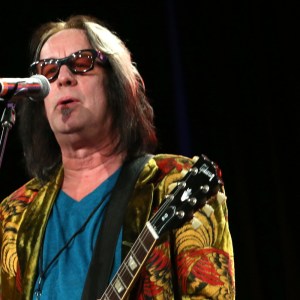Jethro Tull stood out from the prog-rock crowd with their unorthodox song suites and reliance on leader Ian Anderson’s flute for instrumental texture. With their 1974 single “Bungle in the Jungle,” however, they delivered more of a direct hit, even with the flute still doing its thing, for one of their biggest individual successes.
Videos by American Songwriter
What was the song about? How did it emerge from an unfinished Jethro Tull project? And why did its creator consider it somewhat uncharacteristic of the band’s output? Let’s join the monkeys in “Bungle in the Jungle” and strike up the tune.
Welcome to the Jungle
The music of Jethro Tull was generally too unwieldy for hit-single status. They did score a couple of smashes in their native Great Britain, but it was difficult to do the same in America, even with songs like “Thick as a Brick,” “Aqualung” and “Locomotive Breath” eventually becoming classic rock staples.
However, the dam began to break about with “Living in the Past,” a song the band gave a belated American release after recording it years earlier, only to watch it soar to No. 11 in the charts. That song opened the doors for them on pop radio, but, again, their normal output, which was often musically knotty and lyrically opaque, wasn’t going to get the job done.
Anderson realized this when he was recording “Bungle in the Jungle” with the band after writing it a bit earlier (more on that in a moment). As such, he intentionally went for an arrangement that would score with rock audiences, complete with a big chorus and a bevy of instrumental hooks. It worked, as the song went to No. 12 upon its release off the album War Child in 1974.
Anderson has often expressed some ambivalence about the song in interviews, considering that it’s not really representative of much of his work. Nonetheless, he understood its catchy nature and why it became a hit. The strange thing about “Bungle in the Jungle” is how it was rescued from a project that never came to fruition, as Anderson explained in an interview with Songfacts:
“It was actually late ’72 or early ’73 when I was in Paris recording an album that never got released, although one or two of the tracks made it out in 1974, but that was at a time when I was writing an album that was exploring people, the human condition, through analogies with the animal kingdom. And that particular song was perhaps the more obvious and the more catchy of the tunes. Eventually it was finished and saved in time for the War Child album, sometime later.”
What is the Meaning of “Bungle in the Jungle”?
You have to credit Anderson for how extensively he teases out his metaphor about humanity being more like the animal kingdom than we’d care to admit. He also does an amazing job of finding lyrics that fit so seamlessly into his sinewy melody. Listen to how the opening couplet rolls off the tongue: Walking through forests of palm tree apartments / Scoff at the monkeys who live in their dark tents.
Anderson paints a stark, unsparing picture of the predatory nature of these beasts that are standing in for us in this tableau: I’ll write on your tombstone, and thank you for dinner / This game that we animals play is a winner. He also takes a caustic look at whatever higher power put this all together: He’s a lover of life, but a player of pawns.
In the chorus, Anderson gets to the nitty-gritty by segueing into the first person, drawing a direct parallel with the selfishness of the animals: I’m a tiger when I want love / And I’m a snake when we disagree.
“Bungle in the Jungle” might not have sounded like typical Jethro Tull. But the inventiveness and intelligence of the track were right on brand.
When you purchase through links on our site, we may earn an affiliate commission.
Photo by Tony Russell/Redferns
